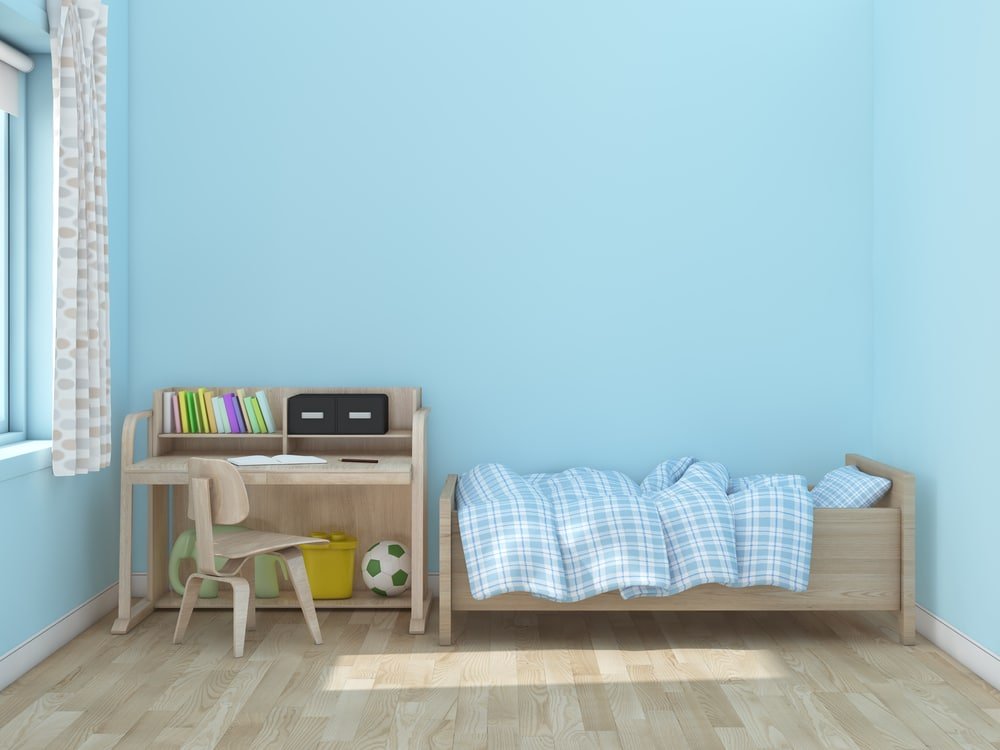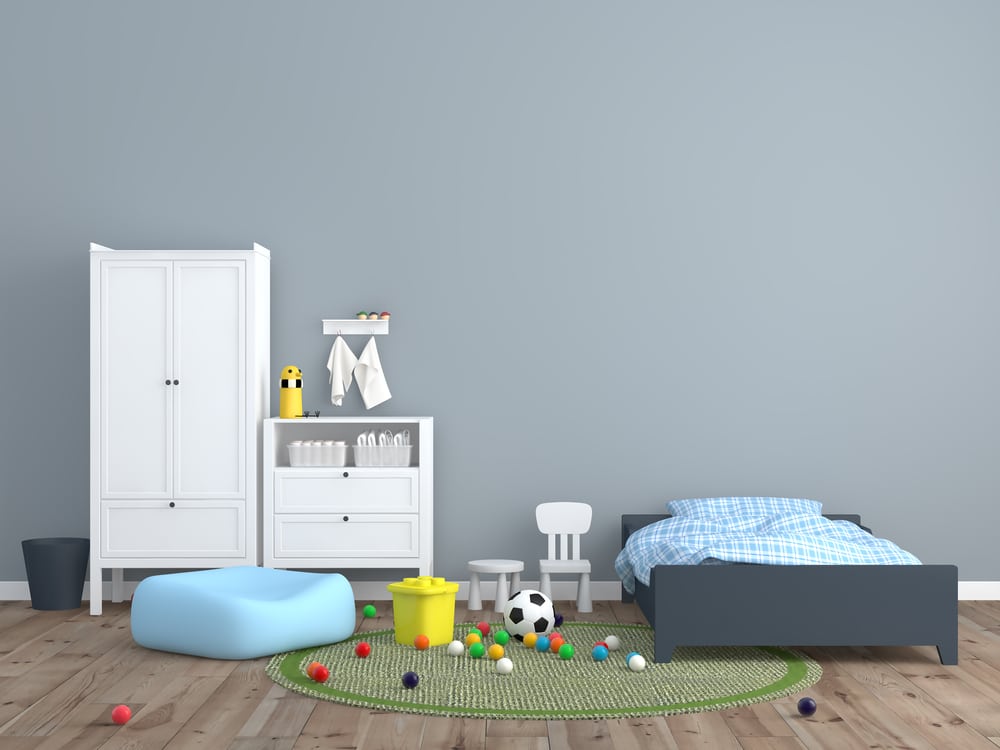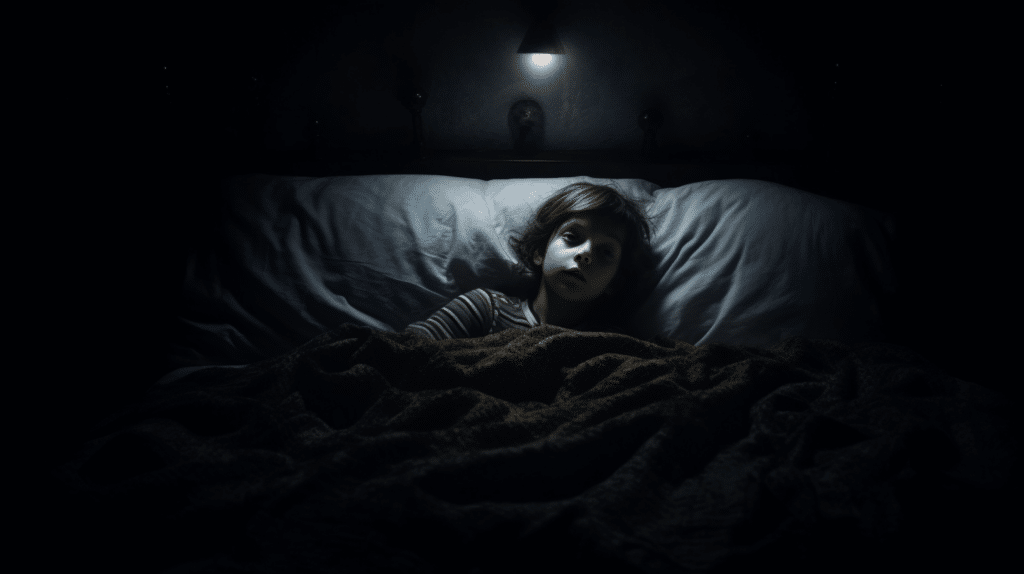Transitioning from a crib to a toddler bed is an important milestone in a child’s development. As children grow older, their physical and cognitive abilities change, and they may begin to outgrow the confines of a crib. This transition can be both exciting and challenging for both parents and children alike. It is crucial to approach this transition with careful consideration, ensuring that it is done at the appropriate time and in a manner that promotes safety, comfort, and healthy sleep habits.
In this article, we will explore the signs that indicate your child is ready for a toddler bed, as well as how to choose the right bed for your little one. We will discuss strategies for preparing your child for the transition, creating a safe sleep environment, establishing a bedtime routine, and whether to opt for a gradual transition or take the cold turkey approach. Additionally, we will provide tips on handling nighttime wake-ups during this period of adjustment and offer suggestions on celebrating and reinforcing this significant milestone in your child’s life. By following these guidelines and taking into account your child’s individual needs and readiness cues, you can make the transition from crib to toddler bed smoother and more successful for both you and your little one.
Signs Your Child is Ready for a Toddler Bed
Determining whether your child is ready to transition from a crib to a toddler bed can be aided by recognizing certain indicators of readiness. The toddler bed transition is an important milestone in a child’s development, and it is essential to ensure that they are emotionally and physically prepared for this change. One sign of readiness is when your child starts climbing out of their crib. This can be dangerous as they may fall and injure themselves. It indicates that they have outgrown the confines of the crib and are seeking more freedom in their sleep environment.
Another sign of readiness for a toddler bed is when your child consistently expresses discomfort or resistance towards being confined in the crib. They may try to escape by kicking or pushing against the sides of the crib, demonstrating their desire for more space. Additionally, if your child has started potty training, transitioning to a toddler bed can be beneficial as it allows easier access to the bathroom during nighttime accidents.
It is important to note that every child develops at their own pace, so these signs should serve as guidelines rather than strict rules. Observing your child’s behavior and assessing their individual needs will help determine if they are ready for this transition. By acknowledging these signs of readiness, you can ensure that your child’s move from a crib to a toddler bed is smooth and successful
Choosing the Right Toddler Bed

When selecting the appropriate sleeping arrangement for a young child, it is crucial to consider factors such as comfort, safety, and functionality. When it comes to choosing the right toddler bed, parents have several options to consider. One important consideration is the type of bed frame. There are various toddler bed frames available in the market, each with its own advantages and disadvantages. Some common types include convertible beds that can be transformed into a full-size bed as the child grows older, low-to-the-ground beds that make it easier for the child to get in and out of bed independently, and themed beds that feature their favorite characters or designs. It is important to choose a sturdy and durable bed frame that can withstand active toddlers.
Another factor to consider when choosing a toddler bed is the mattress option. Toddlers need proper support for their growing bodies while they sleep, so it is essential to select a comfortable mattress that provides adequate support. There are different types of mattresses available for toddler beds, including foam mattresses and innerspring mattresses. Foam mattresses tend to be lighter and more affordable but may not provide as much support as innerspring mattresses. On the other hand, innerspring mattresses offer better support but may be more expensive. It is advisable to choose a mattress with firmness appropriate for young children’s developing bones and muscles.
When choosing a toddler bed for your child’s transition from a crib, factors such as comfort, safety, and functionality should be taken into account. The type of bed frame should be sturdy and durable enough to withstand an active toddler’s movements while providing easy access for them to get in and out of bed independently if desired. Additionally, selecting an appropriate mattress that offers sufficient support for their growing bodies is crucial. By considering these factors carefully, parents can ensure they choose the right toddler bed that meets their child’s needs during this important developmental stage
Preparing Your Child for the Transition
To ensure a smooth and successful adjustment, it is essential to adequately prepare your child for the exciting new phase of independent sleep. Transitioning from a crib to a toddler bed can be a significant milestone in your child’s development, and taking the time to prepare them can greatly contribute to their overall comfort and acceptance of the change. One effective strategy is to involve your child in the process by letting them choose their new bedding or selecting a bed that aligns with their interests, such as one adorned with their favorite characters or themes. By allowing them this level of involvement, they will feel more ownership over their new sleeping arrangement.
Another crucial aspect of preparing your child for the transition is establishing consistent bedtime routines and expectations. Maintaining familiar rituals, such as reading a story or singing a lullaby before bed, can help create a sense of security during this period of change. Additionally, discussing the upcoming transition with your child in an age-appropriate manner can alleviate any anxiety they may have about leaving behind their crib. It is important to explain that growing up means transitioning into a big kid bed and emphasize how exciting this step is for them.
While many children adapt well to the transition from crib to toddler bed, setbacks are not uncommon. Some children may experience difficulty adjusting to the newfound freedom and might try to get out of bed repeatedly during bedtime or even throughout the night. In such cases, it is important for parents to remain patient and consistent in reinforcing boundaries. Establishing clear expectations around staying in bed through gentle reminders and positive reinforcement can help address these setbacks effectively.
Preparing your child for transitioning from a crib to a toddler bed involves utilizing various strategies such as involving them in choosing bedding and maintaining consistent bedtime routines. Additionally, addressing any setbacks that may arise with patience and consistency will aid in ensuring a smooth adjustment period for both parent and child alike.
Creating a Safe and Comfortable Sleep Environment
Establishing a secure and cozy sleep space is essential for ensuring your child’s safety and comfort during this important phase of their development. When transitioning from a crib to a toddler bed, it is crucial to create a cozy sleep environment that promotes relaxation and restful sleep. Start by setting boundaries around the sleep area, such as using bed rails or placing the bed against the wall. This helps prevent falls and provides a sense of security for your child.
In addition to boundaries, implementing safety measures is vital in creating a safe sleep space. Make sure there are no loose cords or objects that could pose suffocation hazards near the bed. Keep windows securely closed or install window guards to prevent accidents. It is also advisable to anchor furniture, such as dressers or bookshelves, to the wall to avoid tipping over incidents. By taking these precautions, you can ensure that your child’s sleep environment is safe and conducive to their well-being during this transition period from crib to toddler bed.
Establishing a Bedtime Routine
Implementing a consistent and structured routine before sleep can help facilitate a smooth and peaceful bedtime experience for children. Establishing a bedtime routine is crucial when transitioning from a crib to a toddler bed. A predictable series of activities leading up to sleep time helps signal to the child that it is time to wind down and prepare for rest. This can include activities such as brushing teeth, changing into pajamas, reading a story, or listening to calming music. By consistently following this sequence of events each night, children are provided with a sense of security and predictability, which can contribute to better sleep habits.
Maintaining consistency is another key aspect of establishing a bedtime routine during the transition from crib to toddler bed. Children thrive on routines and knowing what to expect. It is important for parents or caregivers to set clear expectations and boundaries around bedtime rituals. This means enforcing consistent bedtimes and wake-up times, regardless of weekends or holidays. Additionally, it is essential not to deviate from the established routine too often or allow exceptions regularly. Consistency helps reinforce the message that sleep time is non-negotiable and reinforces healthy sleep patterns in children’s minds.
Implementing an established bedtime routine plays an integral role in transitioning from a crib to a toddler bed smoothly. By providing structure and predictability through activities leading up to bedtime, children feel secure and prepared for restful sleep. Maintaining consistency in enforcing bedtimes and routines further reinforces healthy sleep patterns in children’s lives.
Dealing with Resistance or Anxiety
To effectively transition from a crib to a toddler bed, it is crucial to establish a bedtime routine. This routine helps children understand and anticipate what comes next, providing them with a sense of security and structure. By following the same sequence of activities each night, such as bath time, brushing teeth, reading a story, and saying goodnight, parents can help their child associate these actions with preparing for sleep. Consistency is key in this process; maintaining the same routine even on weekends or during vacations will reinforce the message that it is time to wind down and go to bed.
Nowadays, dealing with resistance or anxiety during the transition from crib to toddler bed has become increasingly common among parents. Tantrums may arise when children struggle with the change in sleeping arrangements or feel overwhelmed by newfound freedom. To address this issue, parents can involve their child in the decision-making process by allowing them to choose their own bedding or stuffed animal for comfort. Additionally, gradually introducing the new bed by having daytime naps in it or spending some playtime there can help familiarize the child with the new environment and reduce anxiety.
Bedtime fears are another challenge that parents may face during this transition period. Children may express fear of monsters under the bed or other nighttime anxieties that make going to sleep difficult. In such cases, it is important for parents to acknowledge their child’s feelings while offering reassurance and support. Implementing soothing techniques like using nightlights or quiet music can create a calming atmosphere that alleviates bedtime fears. Moreover, talking openly about any concerns before bedtime can provide an opportunity for children to express their worries and allow parents to address them accordingly.
By incorporating consistent routines into daily life and addressing resistance or anxiety effectively, parents can navigate through the crib-to-toddler-bed transition smoothly while promoting healthy sleep habits for their little ones.
Gradual Transition vs. Cold Turkey Approach

One effective method for transitioning a child from their familiar sleeping arrangement to a new setup involves gradually introducing changes, allowing the child time to adjust at their own pace. This approach, known as a gradual transition, offers several benefits that can help ease the process for both the child and the parents. First and foremost, a gradual transition allows the child to become familiar with their new sleeping environment without feeling overwhelmed or anxious. By making small changes over time, such as introducing a toddler bed into the room or removing one side of the crib, the child can gradually get used to these modifications without feeling sudden disruptions in their routine.
Another advantage of a gradual transition is that it provides an opportunity for parents to observe and address any potential issues or concerns that may arise during this period. For instance, if the child experiences separation anxiety when placed in a toddler bed for naptime or bedtime, parents can respond accordingly by offering reassurance and support. Additionally, this approach allows parents to monitor how well their child adjusts to each step of the transition process and make any necessary adjustments based on their individual needs. By taking things slowly and allowing ample time for adjustment, parents can ensure a smoother and less stressful experience for everyone involved.
While a gradual transition has its benefits, it is important to acknowledge some drawbacks associated with an alternative approach commonly referred to as cold turkey. This method involves abruptly moving the child from their crib into a toddler bed without any prior preparation or adjustment period. One drawback of this approach is that it can lead to resistance or anxiety in children who are not ready for such sudden changes. The lack of gradual introduction may cause confusion and discomfort as they are thrust into an unfamiliar sleeping arrangement without proper preparation. Additionally, making such drastic changes all at once may result in disrupted sleep patterns and increased bedtime struggles as children struggle to adapt quickly.
Opting for a gradual transition when moving from crib to toddler bed offers numerous advantages compared to taking a cold turkey approach. By introducing changes slowly, parents can help their child become familiar with the new sleeping arrangement at their own pace, reducing anxiety and resistance. This method also allows for better observation and adjustment based on the child’s individual needs. On the other hand, taking a cold turkey approach may lead to increased resistance and anxiety in children who are not prepared for sudden changes. Therefore, it is crucial for parents to consider the benefits of a gradual transition when deciding how and when to transition their child from a crib to a toddler bed.
Tips for a Smooth Transition
A gradual adjustment in the sleeping arrangement can be facilitated by incorporating familiar items from the child’s previous environment. This can include using the same bedding, stuffed animals, or night lights that the child used in their crib. These familiar items provide a sense of security and comfort during the transition to a toddler bed. Additionally, parents can consider placing the toddler bed in the same location as the crib to maintain consistency in their sleeping environment.
In addition to incorporating familiar items, there are several techniques that can help manage sleep disruptions during this transition period. Firstly, it is important for parents to establish a consistent bedtime routine. This routine should include calming activities such as reading a book or taking a warm bath to signal to the child that it is time for sleep. Secondly, maintaining a consistent wake-up time helps regulate the child’s internal clock and promotes better sleep patterns. Finally, if sleep disruptions occur during this transition period, parents should respond calmly and consistently without resorting back to using the crib. Offering reassurance and comfort while gently encouraging the child to stay in their new bed will help them adjust more smoothly over time.
Handling Nighttime Wake-Ups
When transitioning a child from a crib to a toddler bed, it is important to consider various factors in order to ensure a smooth transition. In the previous subtopic, we discussed some tips for making this transition easier on both the child and the parents. Now, let’s focus on how to handle nighttime wake-ups during this period.
Handling nighttime wake-ups can be challenging when transitioning a child from a crib to a toddler bed. One of the first steps in managing these wake-ups is establishing consistent nighttime routines. This can help signal to the child that it is time for sleep and create a sense of security and predictability. Incorporating activities such as reading books or singing lullabies can be helpful in calming the child before bedtime.
Another strategy that may assist with handling nighttime wake-ups is sleep training. Sleep training involves teaching children healthy sleep habits and self-soothing techniques so they can fall asleep independently and go back to sleep if they wake up during the night. There are different methods of sleep training, including gradual extinction and controlled crying, which involve gradually reducing parental interventions over time.
When transitioning from a crib to a toddler bed, it is essential to establish consistent nighttime routines and consider implementing sleep training techniques to manage nighttime wake-ups effectively. By providing structure and teaching children how to self-soothe, parents can support their child’s ability to fall asleep independently and maintain better quality sleep throughout the night.
Celebrating and Reinforcing the Milestone
To commemorate and strengthen this significant achievement, it is important to acknowledge and celebrate the child’s successful progression to a new sleep environment. Celebratory rituals can play a crucial role in marking this milestone and making the child feel proud of their accomplishment. Parents can consider organizing a special bedtime celebration where the child gets to choose their favorite storybook or stuffed animal for the first night in their toddler bed. This celebratory ritual not only creates excitement but also helps create positive associations with the new sleep arrangement.
In addition to celebratory rituals, parents can implement positive reinforcement strategies to further support this transition. Praising and acknowledging the child’s readiness for a toddler bed can boost their confidence and motivation. For instance, parents can express pride in how well the child is adapting to their new sleep space, emphasizing their bravery and independence. Another effective strategy is using a reward system such as stickers or small treats for each successful night spent in the toddler bed. By reinforcing positive behavior, parents provide encouragement and motivation for the child to continue embracing their new sleeping arrangement with enthusiasm. Ultimately, celebrating and reinforcing this milestone allows children to feel accomplished while also fostering a sense of security during this period of transition.
Conclusion
In conclusion, transitioning from a crib to a toddler bed can be an exciting milestone for both parents and children. By recognizing the signs of readiness, choosing the right bed, and preparing your child for the transition, you can ensure a smooth and successful experience. Creating a safe and comfortable sleep environment is crucial in promoting healthy sleep habits, while establishing a bedtime routine helps signal to your child that it is time to rest.
Whether you choose a gradual transition or a cold turkey approach, it is important to remain patient and consistent throughout the process. Offering tips such as using familiar bedding or introducing special stuffed animals can help ease any anxiety or resistance your child may have. Additionally, handling nighttime wake-ups with calmness and reassurance reinforces their newfound independence.
Lastly, celebrating this milestone with your child can provide positive reinforcement and encouragement for their accomplishment. By eliminating personal pronouns in academic writing style, we have provided an informative guide on how and when to transition from a crib to a toddler bed. With careful planning and support, this transition can be an exciting step towards your child’s growth and development.


